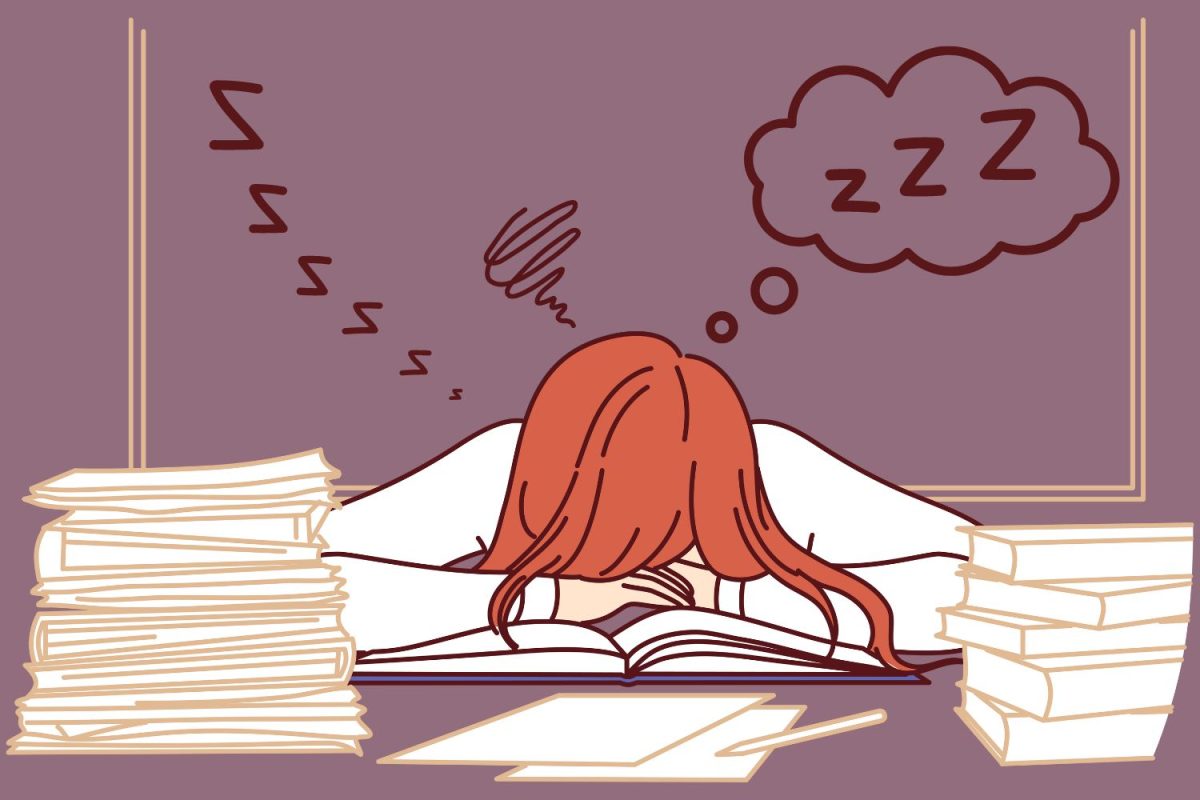Well into his sophomore year, Ryan Farrell (’16) faced the frustration of going through school with an improperly diagnosed learning disorder. Although Farrell underwent testing years before, he still entered sophomore year without proper support. “It was frustrating to see other people studying the same amount and working just as hard and getting better grades,” Farrell said.
Students like Farrell find themselves struggling with their learning profiles, stemming from the disparate manner in which these students’ brains learn and process information.
Farrell was eventually re-tested his sophomore year, and his dyslexia was revealed. He describes the effects of dyslexia, by stating that the disorder affects his reading comprehension. “It makes it difficult for me to understand what I am reading, I mean I know how to read without stuttering, but when it goes through my mind I don’t actually know how to comprehend it,” Farrell said.
Nick Wilson (’15) also has dyslexia. For Wilson, dyslexia not only impacts his learning style, but also his performance in school. “I’ve always been a bit shy about reading in class openly. I’d never raise my hand,” he said. “I would never read because I knew I’d screw up, whether it was because I just couldn’t do it or because I was just scared.”
Dyslexia is a learning disorder that causes students to struggle with sounds and symbol correspondence.
While some students in the SLD program have dyslexia, it is not the only learning disorder present within the school. Of the 82 students who are either members of the SLD department or receive testing accommodations, there are a multitude of disorders that are documented.
The learning disorders these students are afflicted by are neurological conditions that impede certain academic and social skills. Learning Specialist and SLD Department Head Roger Smith said that, “when we are thinking about learning disabilities in the school setting we are talking about some kids who on average are processing language differently, whether they are either reading it, listening to it, producing, verbally or if they’re writing it, it’s a more difficult task than [for] the average student,” Smith said.
When diagnosing a learning disorder, Psychologist and K-12 Student Support Team Department Head Helen Jackson conducts comprehensive testing, analyzing the strengths and weaknesses of a student. One of the many ways Jackson tests for a learning disorder is by comparing a student’s potential to their achievement. Determining a student’s potential is done through an IQ test, and achievement is measured through teacher observation and a range of listening, writing and memory tests.
In the United States, schools adhere to federal law when defining what is a learning disorder by these test scores, however ASL does not follow such strict guidelines. “[At] ASL we are not bound by these laws, and it is much more around what is the statistical significance of that difference between potential and achievement,” Jackson said.
When a student is diagnosed with a learning disorder the school takes certain supportive measures – said measures are typically either enrollment in the SLD program or testing accommodations.
Learning Specialist Jerri Byrom explains that the SLD program tries to “equalize the curriculum making it accessible for each student so that they can learn in the ways that are best for them, and also so they can express the information so the teacher knows what they know.”
A large part of the SLD department’s job is to act as a liaison between SLD students and their teachers. This communication is carried out with the intention of helping teachers make their curriculum accessible for all learning profiles.
World Languages and Culture Teacher Mario Rojas was struck by the SLD department’s attempts to assimilate both new teachers and their students to the curriculum when he first assumed his role at the school. What Rojas experienced is standard procedure at the beginning of each school year: Smith, or whomever is the department head that year, will explain to teachers the SLD department’s purpose and different steps teachers can take to make their courses more accessible to all learning profiles.
Beyond attempting to help teachers foster a more inclusive academic environment for SLD students, the department has other pursuits. Smith regards the process wherein they try to assuage some students’ belief that they are unintelligent compared to their peers as one of the most important aims of the department. “I see kids getting discouraged and probably what we do more than anything in SLD is try to continually validate the intelligence, fortitude and the goodness of the humanity of the kids in [the SLD program].
“[SLD students] all go to college, they all go to schools they are happy about. They make it through knowing by the time they [graduate] … that they’re not dumb,” Smith said.
Livy Scott (’17) is often called lucky. Her reaction to this sentiment, however, is different than most would envisage: She is angered. That is because the “luck” that people note is rooted in their belief that she is receiving an unfair academic advantage.
Scott receives testing accommodations due to her mild dysgraphia, a disorder that limits one’s ability to write coherently, and testing anxiety – this is what her peers consider to be lucky. “The fact that I get two hours on an essay [that] everyone else gets an hour on is perceived to be unfair,” she said. “When I talk to people about it, their first reaction is, ‘oh that’s so lucky’.”
What these individuals don’t see are Scott’s struggles. Due to her dysgraphia, she finds performing tasks of verbal reasoning difficult which can, in her opinion, lead to negative perceptions of her work ethic. “I think because of my spelling and grammar being so bad I can be written off as lazy or people think I don’t try that hard,” she said.
Wilson, on the other hand, found that his peers thought he had an edge when it came to standardized testing. “It mainly got bad when things like SATs or ACTs came around when this one test score means – or is derived to mean by people – the determinant of whether or not they get into college,” he said.
Emphasizing that this culture is compounded as high school progresses and the college process begins, Wilson said, “when it gets competitive, people see it [acquiring extra time] as an extra bump to get your score higher.”
Both Jackson and Smith maintain that learning disorders have no correlation with intelligence. “The SLD students may appear to be of equal intelligence to the other kids in their class and that tends to be the case because we have a lot of really smart students with intellectual skills and abilities. The problem is their process of getting information into their heads and getting it onto a piece of paper is different to the rest of the kids,” Smith said.
Another response that Smith is aware of is confusion: Students, he believes, get confused when their peers take tests with extra time. For some, as Wilson noted, this can be seen as an unfair advantage.
National Honor Society (NHS) President Caroline Schneider (’15) echoes Wilson’s sentiment that these beliefs are driven by the inherently competitive nature of ASL. “Seeing other people get extra time is almost like an incentive for those who don’t get extra time themselves [to try and figure out how to get it],” she said.
The trend of learning disorders and testing accommodations being viewed as desirable is becoming increasingly prevalent, to the extent that some may try to manipulate the diagnosis system to gain testing accommodations. “There are people who are trying to play the system,” Jackson said.
While Jackson has heard about this type of fraud occurring in the U.S., to both her and Smith’s knowledge, this has never occurred at ASL.
This is something that the department has to remain ever-vigilant about while assessing students seeking enrollment in the SLD program or accommodations. “There are evaluation reports that we do not fully accept, because we feel they are [not] robust enough, or that they are [not] the kind of evaluations that we expect,” Jackson said.
When this occurs, Jackson will reach out to the evaluators and request a more detailed report; often times, the threshold is lower in the U.S.
Due to the more thorough diagnosis process at ASL, it becomes harder for the students illegitimately seeking accommodations to manipulate the system. “All the testing that is done in-house through Jackson [is] a really comprehensive evaluation,” Smith said.
One of the many repercussions of manipulating the diagnosis system is the rigorous application process that the College Board and ACT have adopted. While the school may sanction accommodations for students who do not have documented learning disorders, the College Board requires “a student must have documentation showing evidence of the following: The disability, the degree to which the student’s activities are affected (functional limitation) [and] the need for the specific accommodations requested.”
While the ramifications of having learning disorders varies from student-to-student, their response and attitude to their differences remain their prerogative. “I’ve always prided myself that I don’t think my [disorders] define me,” Scott said. “A learning disorder does not make or break how you are as a student, it just makes it a little bit harder,” she said.
Wilson is proud of how he’s adapted as a student because of his dyslexia, and recognizes its impact on his entire personality. “I would never turn out the way I am today if I didn’t have dyslexia. It’s a part of me. I don’t know exactly how it’s made me who I am but I know even if you changed a little thing about me, I’d be a totally different person.
“Whether that means I would’ve become confident earlier or something else, I don’t know – I don’t regret having dyslexia though, it’s just who I am,” Wilson said. “Everyone has their own little things, and that’s mine.”







